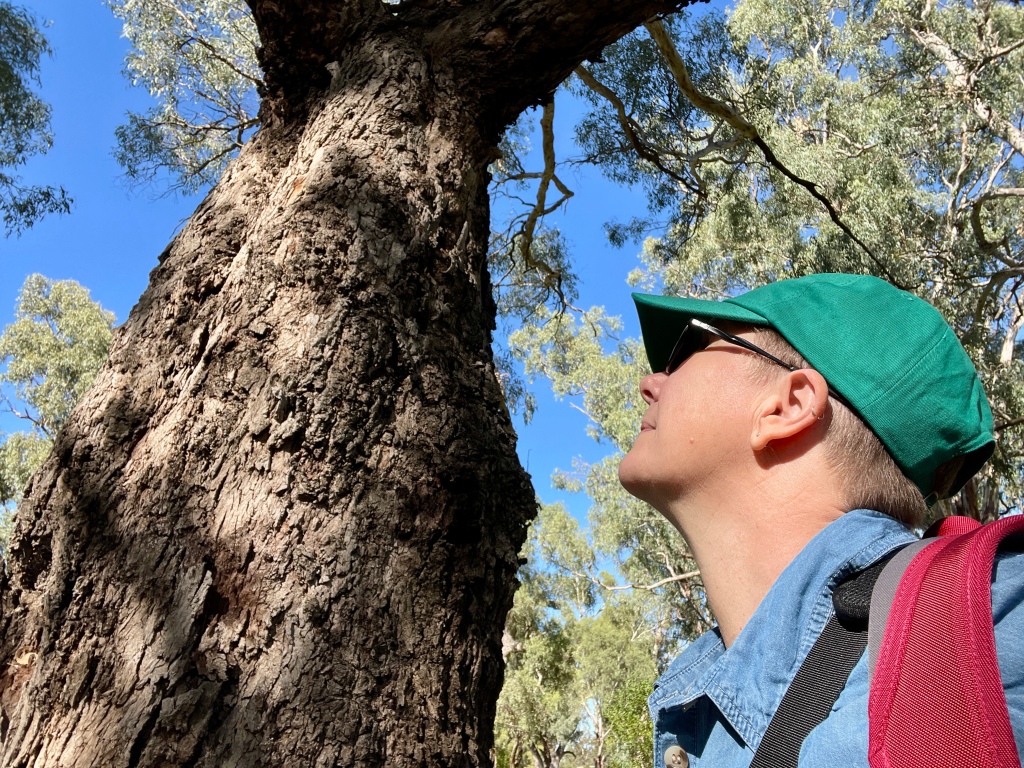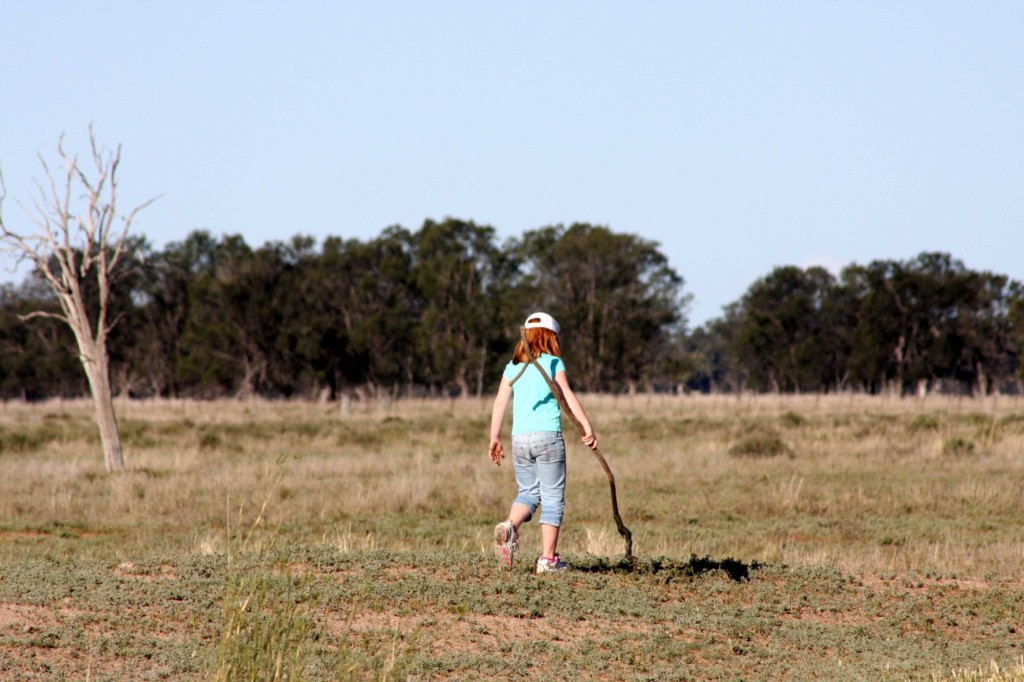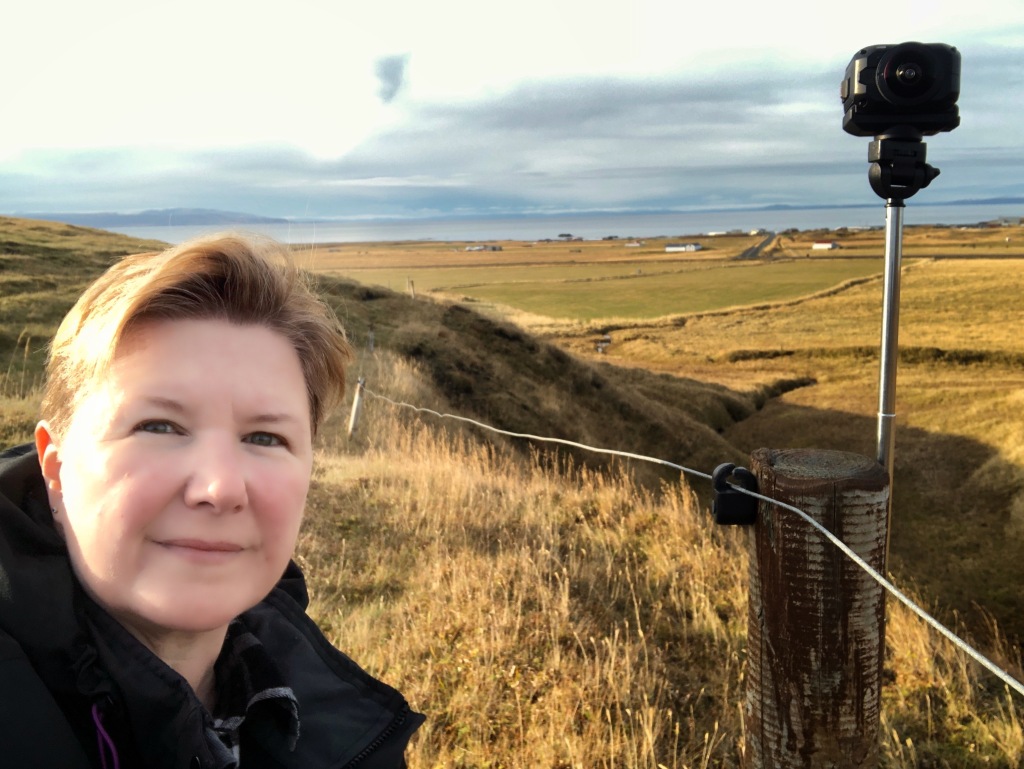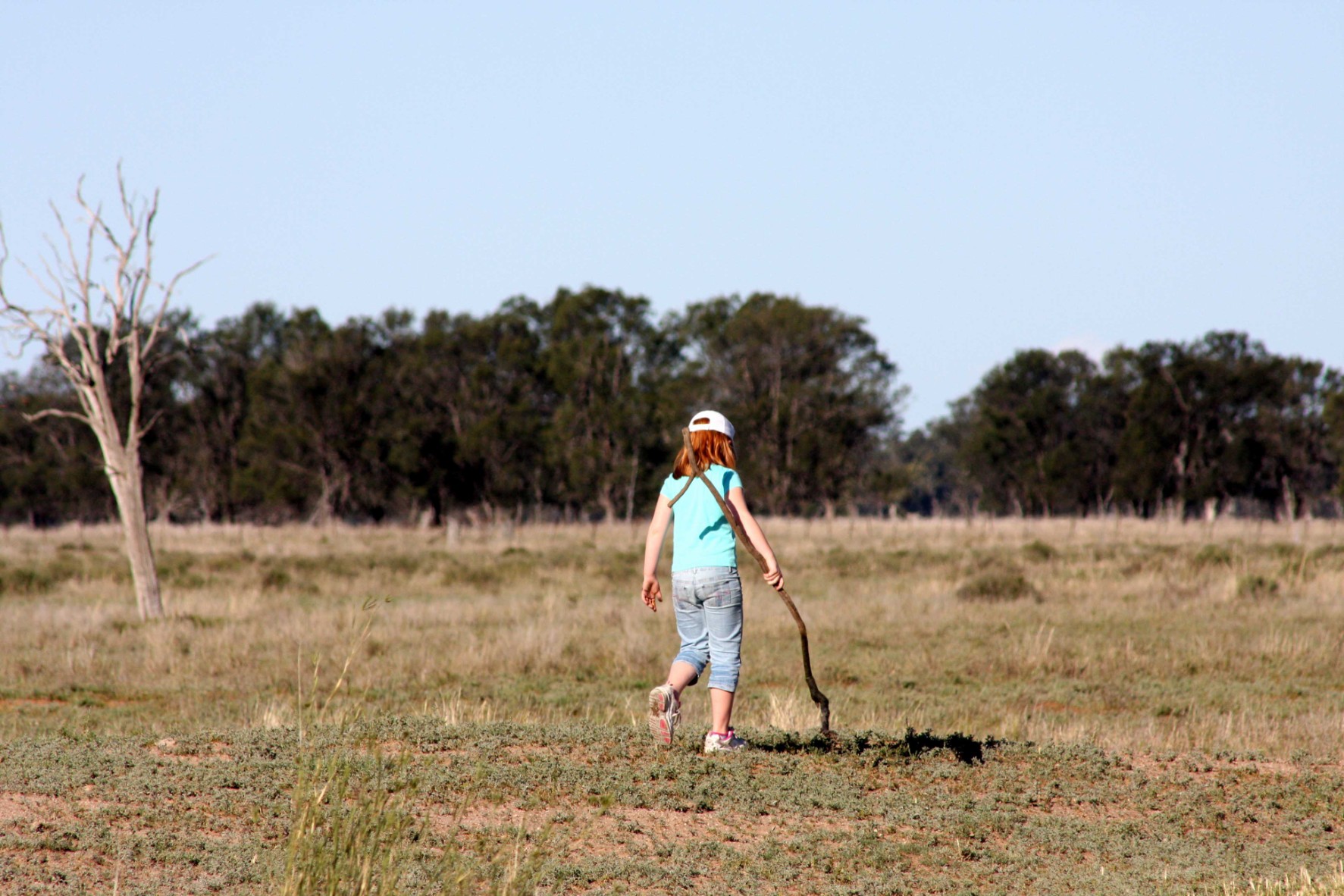
Walking with intent or simply for joy is a sensory experience of connection with each other and our surrounds in an act that encourages self-awareness.
My earliest memories of walking are of holding my grandmother’s hand as we wandered across bare, cracked grey soils following bush tracks that swept through stands of she-oaks, poverty bush and the gilgais that pocked the flat plains, back along eucalypt-lined dry creek beds and home again. Nanna walked most days, an activity that included all the grandchildren from a very early age.
Closer to home, there were solo meanderings along sheep paths through tall stands of purple wiregrass in big paddocks beneath the big skies of Wayilwan Country in north-western New South Wales; broken stalks scratching my bare legs, grass seeds feathering my socks, and pale freckled skin painfully scorched by the sun.
Some of these childhood wanderings had a purpose, sometimes they were an escape, but all of them shaped me.

…the way I walk within my practice continues to evolve, as I search for the path back to those curiosity-filled paddock explorations of my childhood.
While I also spent a lot of time on horseback, walking was an inescapable part of my youth. Sometimes I’d fall from my horse kilometres from home, plodding back until I caught up with the runaway. There were dusty kilometres spent trailing behind large mobs of sheep as they were moved from one paddock to another, giving the working dogs a ‘spell’. Occasionally, there would be a two kilometre walk home at the end of a long school day if Mum forgot to pick us up off the bus.
After I left school, I had a car. I continued riding horses until my early 30s, but I rarely walked unless I was doing a chore or shopping. It was simply a way of getting from A to B. Other than my grandmother, no one in my family walked for the joy of walking.
When asked about where walking sits within my creative practice today, I often get a laugh when I say I don’t particularly like walking for the sake of walking. I need a reason to walk. In truth, the way I walk within my practice continues to evolve in my search for the path back to those curiosity-filled paddock explorations of my childhood.
…it’s becoming increasingly important for me to take more time to be attentively immersed in a location—to simply be.
Over the past two decades, walking has been the means by which I observed, listened to and documented the landscapes and ecosystems that inform and inspire my work. In 2019, I spent two months tracking European ravens on foot, along a peninsula in the north of Iceland as part of the second stage of research and documentation for my project, Eye of the Corvus: Messenger of Truth.

While not being aware of walking as an artform until about six years ago when I began collaborating with UK artist, Andrew Howe in 2018, I actually began walking for creative purposes about 17 years ago. One memorable walk from that time was a midsummer morning after rain; the air was thick and warm, heady with the scent of petrichor and lemon-scented gum trees. These walks were, and are, a way to mull over ideas while immersed in the landscape. That midsummer walk in 2007 became a multi-sensory installation work for an exhibition at the Western Plains Cultural Centre the following year[1].

In more recent years, I’ve incorporated guided soundwalks, with and without technology, as a way of publicly sharing my listening and field recording process. It also gives me the space and opportunity to have conversations about acoustic and soundscape ecology and the wider environmental issues that I explore in my work.

Over the past three years, I’ve consciously slowed my process. Walking is often a ‘doing’ type of thing, but it’s becoming increasingly important for me to take more time to be more attentively present in a location—to simply be. Fifty years ago, I learned to navigate flat, big-sky country by walking. I find myself once again looking for those signs and signals in familiar and unfamiliar territories. This requires acknowledging different ways of knowing.
Reclaiming the wonder and curiosity of childhood along the way is something worth tracking back for.
It was the shady lane rambles and paddock explorations of my childhood—climbing, sitting, digging, listening, watching, poking, prodding, tracking and catching creatures, where I learned about the cycles of life, the signs of changing seasons, the coming of rains and droughts, or simply when to head home. I still recall the sparkling amber of hard Callitris sap, stroking the hard grainy backs of beetles nestled in deeply furrowed bark, the tangy fruitiness of crushed Wilga leaves, the thud of a kangaroo tail making contact with the ground, zebra-striped box tree shadows across the lane late in the afternoon, and the musty hollow grass stalks I tore off and chewed in my wanders.
As co-convenor of the a new and growing Australian Walking Artists network whose members walk for a range of cultural and artistic purposes, and an active member of the international walking creatives platform walk · listen · create, I’m frequently amazed how varied and eclectic the creative walks and artistic responses to walking are. The act of walking truly entangles the act putting one foot in front of the other with the ecological, geopolitical, social and economic challenges of our time. Walking with intent or simply for joy is a sensory experience of connection with each other and our surrounds in an act that encourages self-awareness.
For me, walking is a thread that ties the elements of my practice together. As lines on a map often do, the thread sometimes loops back, sometimes it breaks, and sometimes it simply stops with a knot before starting again. Reclaiming the wonder and curiosity of childhood along the way is something worth tracking back for.

[1] Perspectives. Art. Ecology., 23 May — 19 July 2009, Western Plains Cultural Centre
PERSPECTIVES. ART. ECOLOGY. CATALOGUE PDF BELOW

